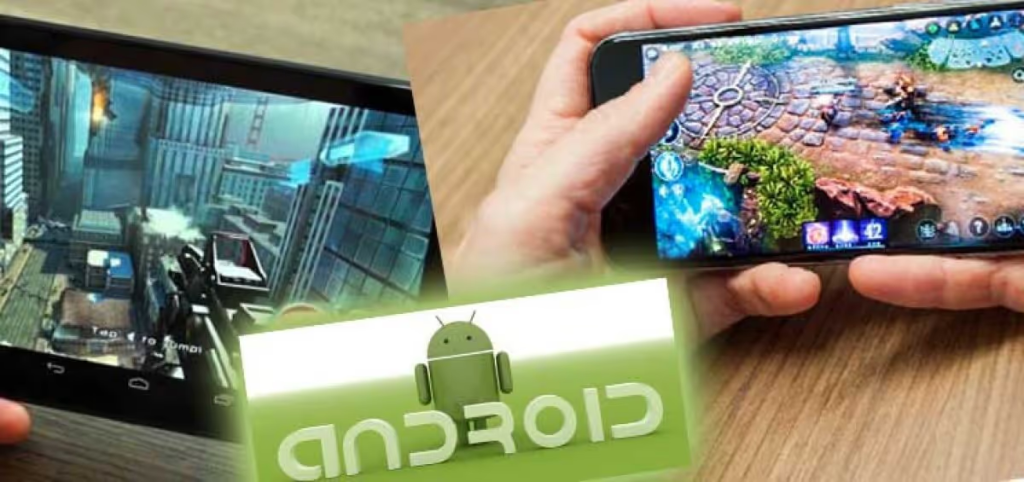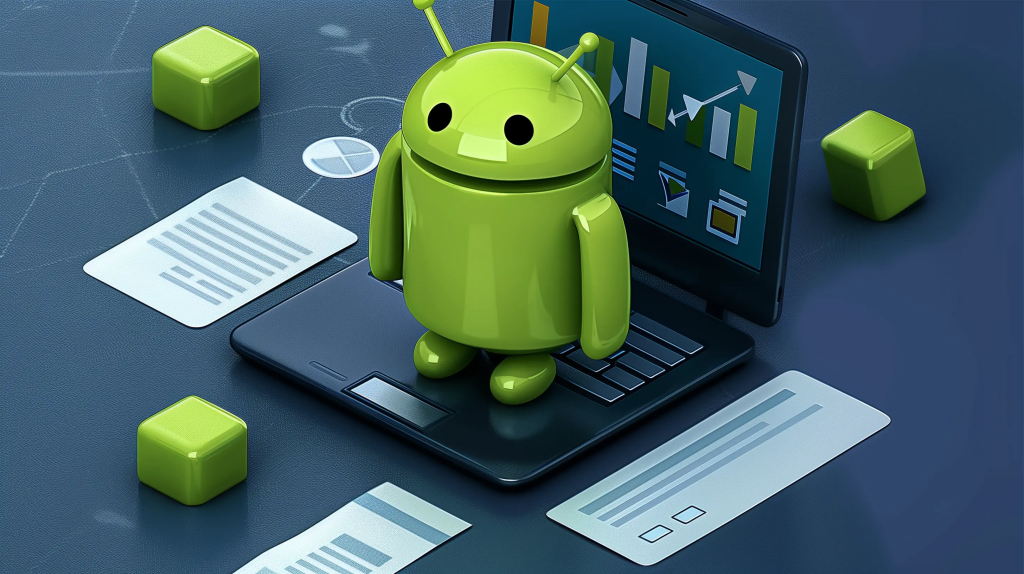The world of mobile gaming has exploded over the past decade, transforming from simple time-killers to complex, visually stunning experiences that rival console games. Behind every successful Android game lies a foundation of technical knowledge, creative problem-solving, and optimization strategies. This technical overview delves into the core components of Android game development, providing insights for both aspiring developers and gaming enthusiasts curious about the technology powering their favorite mobile games.
The Android Game Development Ecosystem
Android game development exists within a diverse technological ecosystem that continuously evolves with each platform update and hardware advancement. Understanding this ecosystem is crucial for developers looking to create successful mobile games.
Development Environments and Tools
The foundation of Android game development begins with selecting appropriate development tools:
- Android Studio: Google’s official integrated development environment (IDE) provides comprehensive tools specifically designed for Android app and game development.
- Game engines: Unity and Unreal Engine dominate the market, offering powerful capabilities for both 2D and 3D game creation.
- Native development: Some developers choose to work directly with Android’s native APIs using Java or Kotlin for maximum control and optimization.
- Cross-platform frameworks: Tools like Godot, Cocos2d-x, and Corona SDK enable development across multiple mobile platforms simultaneously.
Each approach offers distinct advantages and challenges, influencing development speed, performance capabilities, and platform compatibility. The choice typically depends on a developer’s technical background, project requirements, and target audience.
Programming Languages in Android Game Development
Multiple programming languages power the Android game programming landscape:
- Java: The traditional Android development language remains relevant for game development, especially for projects using the native Android SDK.
- Kotlin: Google’s preferred language for Android development offers modern features and interoperability with Java.
- C#: Primarily used with Unity, allowing developers to create games that can be deployed across multiple platforms.
- C++: Essential for performance-critical components, game engines, and native code integration.
Developers often combine multiple languages within a single project, using each for its strengths—C++ for performance-intensive systems, with Java or Kotlin handling platform-specific features and UI elements.
Core Technical Components
Successful Android games require mastery of several fundamental technical components that work together to create compelling gaming experiences.
Graphics Rendering
The visual component of Android games involves complex systems managing how game elements appear on screen:
- OpenGL ES: The industry standard for mobile 3D graphics, allowing direct access to the device’s GPU.
- Vulkan: A newer graphics API offering improved performance and efficiency for high-end games.
- 2D graphics APIs: Libraries like Android Canvas and custom 2D engines for less graphically intensive games.
Graphics rendering involves numerous technical considerations including texture management, shader programming, polygon optimization, and implementing visual effects. Developers must balance visual quality with performance constraints, particularly for games targeting a wide range of devices.
Game Physics and Logic
The behavior of game elements follows rules defined through physics simulations and game logic systems:
- Physics engines: Software components calculating realistic object interactions, collisions, and movements.
- AI systems: Algorithms controlling non-player character behaviors and responses.
- Game mechanics: Core interactive elements defining player actions and their consequences.
These systems must process numerous calculations each frame while maintaining smooth performance, requiring efficient algorithms and data structures. Many developers leverage existing physics solutions like Box2D or the physics components within Unity and Unreal Engine.
Audio Implementation
Sound design and implementation contribute significantly to immersive gaming experiences:
- Audio engines: Specialized systems managing sound playback, effects, and optimization.
- Format considerations: Balancing audio quality with file size through compression techniques.
- Positional audio: Creating realistic sound environments that respond to player position and game events.
Audio implementation presents unique challenges on mobile platforms, including managing interruptions from calls or notifications, and accounting for the varied speaker capabilities across Android devices.

Performance Optimization Strategies
Mobile devices present unique constraints that demand specialized optimization approaches to deliver smooth gaming experiences.
Memory Management
Effective memory usage remains critical on mobile platforms with limited resources:
- Asset compression: Reducing texture, audio, and model sizes without compromising quality.
- Resource pooling: Reusing objects rather than creating and destroying them repeatedly.
- Memory profiling: Identifying and addressing leaks or inefficient resource usage.
Poor memory management can lead to crashes, stuttering gameplay, and battery drain, making this a crucial focus area for developers targeting a wide device spectrum.
CPU and GPU Optimization
Processing optimization ensures games run smoothly on various hardware configurations:
- Multithreading: Distributing work across multiple CPU cores for improved performance.
- Batching: Combining rendering operations to reduce GPU overhead.
- Level-of-detail systems: Adjusting model complexity based on distance or importance.
- Shading optimizations: Creating efficient shader programs that minimize GPU processing time.
These techniques help maintain consistent frame rates—a critical factor in player experience and game responsiveness.

Battery and Thermal Management
Mobile games must consider power consumption and device heating:
- Frame rate capping: Limiting frames per second to reduce unnecessary processing.
- Background processing reduction: Minimizing activity when the game isn’t actively being played.
- Adaptive performance: Adjusting graphics quality and processing based on battery level or device temperature.
Games that drain batteries quickly or cause devices to overheat face negative reviews and poor user retention, making these considerations essential for commercial success.
Platform Integration Challenges
Android game development involves navigating the platform’s unique characteristics and fragmentation challenges.
Device Fragmentation
The diverse Android ecosystem presents significant compatibility considerations:
- Screen size and resolution variations: Supporting everything from small phones to large tablets.
- Hardware capability differences: Accounting for various processor, memory, and GPU specifications.
- Android version support: Balancing new features against backward compatibility.
Successful developers implement adaptive systems that provide optimal experiences across a defined range of supported devices while gracefully handling limitations on less capable hardware.
Monetization and Store Integration
Commercial games require seamless integration with platform services:
- In-app purchases: Implementing secure transaction systems for virtual goods.
- Ad integration: Incorporating advertising without disrupting gameplay experience.
- Analytics: Gathering performance and player behavior data to guide improvements.
These integrations involve working with Google Play Services, third-party SDKs, and addressing regional variations in payment systems and regulations.

Testing and Quality Assurance
Thorough testing across multiple dimensions ensures game stability and quality:
- Automated testing: Scripts verifying core functionality and catching regressions.
- Device testing: Verification across a representative sample of target devices.
- Performance profiling: Identifying bottlenecks and optimization opportunities.
- User experience testing: Ensuring intuitive controls and enjoyable gameplay.
The complex interaction between game systems means comprehensive testing remains essential, with many developers employing specialized QA teams or services.
Emerging Technologies in Android Game Development
The mobile game development landscape continues evolving with several technologies reshaping what’s possible on the platform.
Augmented Reality (AR) Integration
AR capabilities are expanding gaming beyond the screen:
- ARCore: Google’s platform for building AR experiences on Android.
- Environmental understanding: Technologies allowing games to interact with real-world surfaces and lighting.
- Persistent AR: Creating experiences that remain in place between sessions.
AR integration opens new gameplay possibilities but introduces additional technical challenges around device compatibility, environmental detection, and processor demands.
Cloud Gaming on Android
Cloud gaming services are changing how complex games can be delivered to mobile devices:
- Streaming architectures: Systems delivering high-end gaming with minimal on-device processing.
- Input latency challenges: Techniques minimizing the delay between player actions and on-screen responses.
- Hybrid approaches: Combining local processing with cloud resources for enhanced experiences.
While still evolving, these technologies potentially allow console-quality gaming experiences on even modest Android devices.
The Future of Android Game Development
Several trends are likely to shape Android game development in coming years:
- Machine learning integration: AI-enhanced gameplay, procedural content generation, and player experience personalization.
- Cross-platform play: Seamless multiplayer experiences across mobile, console, and PC platforms.
- Photorealistic rendering: Advanced lighting and materials approaching cinematic quality on high-end devices.
- Alternative input methods: Increased support for controllers, voice commands, and gesture recognition.
Developers who explore these frontier technologies while mastering current best practices position themselves at the forefront of mobile gaming innovation.
Recommended Resources
For those looking to explore mobile gaming development further:
- Official Android developer documentation and code samples
- Game engine-specific learning resources and communities
- Mobile game development forums and knowledge-sharing platforms
- Industry events focusing on technical aspects of game development
Android game development continues to evolve rapidly, offering exciting possibilities for creators willing to master its technical challenges. Whether you’re a seasoned developer or simply interested in how your favorite mobile games work behind the scenes, the technical foundations covered here provide insight into the complex systems bringing these interactive experiences to life.
Those ready to explore mobile gaming beyond the development side can explore mobile gaming trends and popular titles to understand player preferences and market direction, offering valuable context for aspiring game creators.
